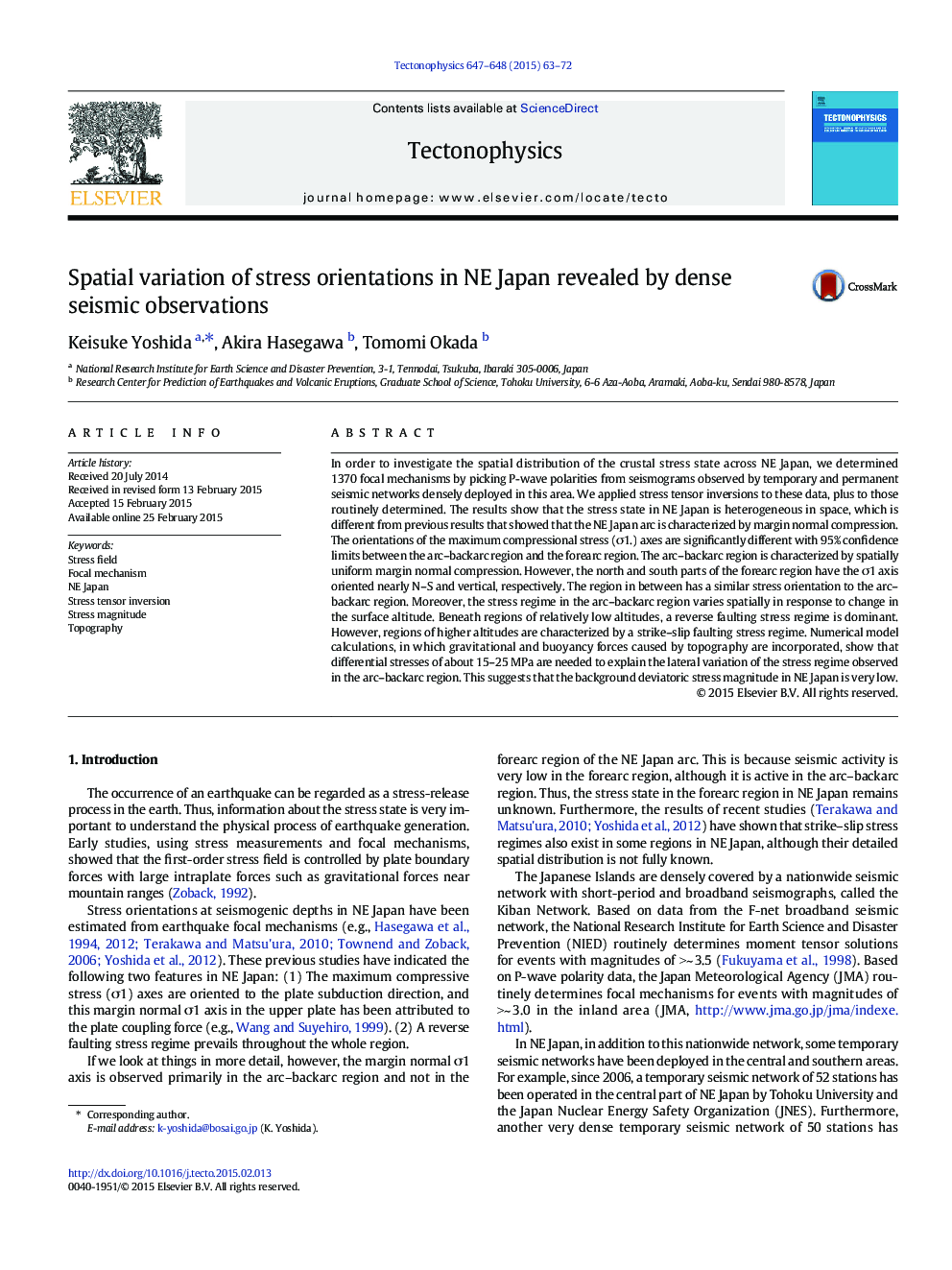| کد مقاله | کد نشریه | سال انتشار | مقاله انگلیسی | نسخه تمام متن |
|---|---|---|---|---|
| 4691691 | 1636746 | 2015 | 10 صفحه PDF | دانلود رایگان |
• Stress inversions were applied to focal mechanisms from temporary data in NE Japan.
• In the arc–backarc, σ1 axes are oriented WNW–ESE by the plate convergences.
• In the forearc, σ1 axes are oblique to the plate convergences by the plate bending.
• In the arc–backarc, stress regimes vary with topography by the gravity forces.
• The background deviatoric stress magnitude in NE Japan is very low.
In order to investigate the spatial distribution of the crustal stress state across NE Japan, we determined 1370 focal mechanisms by picking P-wave polarities from seismograms observed by temporary and permanent seismic networks densely deployed in this area. We applied stress tensor inversions to these data, plus to those routinely determined. The results show that the stress state in NE Japan is heterogeneous in space, which is different from previous results that showed that the NE Japan arc is characterized by margin normal compression. The orientations of the maximum compressional stress (σ1.) axes are significantly different with 95% confidence limits between the arc–backarc region and the forearc region. The arc–backarc region is characterized by spatially uniform margin normal compression. However, the north and south parts of the forearc region have the σ1 axis oriented nearly N–S and vertical, respectively. The region in between has a similar stress orientation to the arc–backarc region. Moreover, the stress regime in the arc–backarc region varies spatially in response to change in the surface altitude. Beneath regions of relatively low altitudes, a reverse faulting stress regime is dominant. However, regions of higher altitudes are characterized by a strike–slip faulting stress regime. Numerical model calculations, in which gravitational and buoyancy forces caused by topography are incorporated, show that differential stresses of about 15–25 MPa are needed to explain the lateral variation of the stress regime observed in the arc–backarc region. This suggests that the background deviatoric stress magnitude in NE Japan is very low.
Journal: Tectonophysics - Volumes 647–648, 19 April 2015, Pages 63–72
